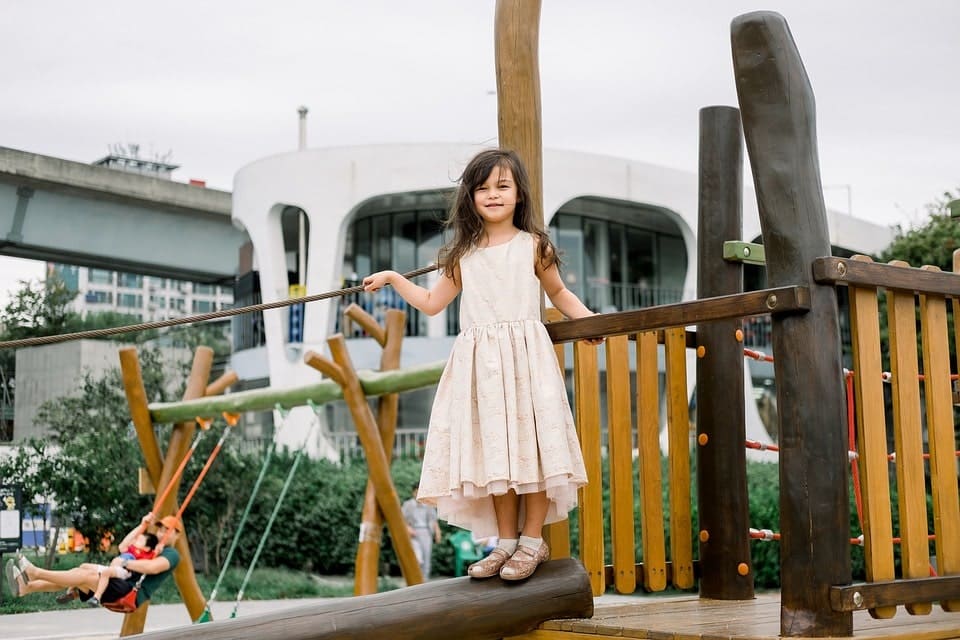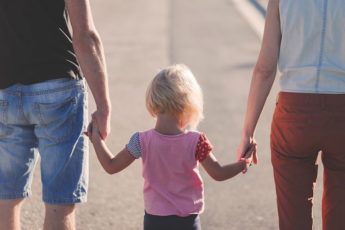
As most of you would know, children are not very receptive when it comes to moving. They cannot fathom the idea of leaving their neighborhood and school friends behind or an area to which they have grown accustomed. No doubt because of its familiarities, the old neighborhood may have proven to be a safe haven for your children; they pretty much knew the neighbors that they could go to should they have an emergency when you are not around.
Especially in these troubled times, it can be challenging to protect your children from the horrors of the world. Assisting your child in making the transition from the old neighborhood to the new is somewhat challenging. In addition, moving into a new area also requires that you alert your kids about safety measures as well.
What Are The Risks For a Child in a Neighborhood
Depending on the neighborhood’s location, community, and other aspects, different children may be exposed to different risks there. However, there are a few typical dangers that kids could experience in their areas.
Traffic: When playing or strolling close to busy roads, children run the risk of being struck by a car or a bicycle.
Crime: In areas with high crime rates, kids may be in danger of becoming the victims of crimes like theft or assault.
Children may be contacted by strangers in the neighborhood who could try to hurt or kidnap them.
Environmental dangers: In neighborhoods where these dangers are present, children may be exposed to environmental dangers like lead or pesticides.
Bullying: Both in-person and online bullying by other kids in the area is a concern for kids. Social media can be a double-edged sword; while it helps kids stay connected, it can also expose them to online bullying.
Abuse of drugs, alcohol, and other substances: Children may be exposed to these substances when playing outside in the neighborhood.
It is critical to be aware of these risks, to inform your children about them, and to take protective measures. You might achieve this by talking to your kids about what to do if they encounter a stranger or by showing them a safe way to cross the street. You can also take a proactive approach by getting to know your neighbors, attending neighborhood gatherings and events, and keeping up with local crime and safety issues.
- According to the CDC, lead exposure can affect nearly every system in the body and is particularly harmful to young children.
- The EPA states that pesticides can be harmful if they are misused, and children are more sensitive to pesticide exposure.
- The National Highway Traffic Safety Administration (NHTSA) reports that in 2019, 214 children were killed in traffic crashes involving a drunk driver.
- The FBI’s 2019 Crime in the United States report indicates that 23.8% of all violent crimes were committed against children under 18.
- The Cyberbullying Research Center found that about 37% of students between the ages of 12 and 17 have been bullied online.
Keeping Children Safe In The Neighborhood
In order to keep kids safe in their neighborhood can take a number of measures.
Children should be taught the dangers of strangers as well as how to spot potentially risky circumstances.
Place restrictions on where kids can play and devise a mechanism for regularly checking in with them. It’s a good idea to establish a family emergency plan that includes a list of safe spots and emergency contacts.
Children should be encouraged to cycle or walk in groups rather than by themselves. For younger kids, consider using tracking devices or apps that allow you to monitor their location when they are out playing.
Develop a relationship with your neighbors and cooperate to watch out for shady activity in the neighborhood.
Make sure children are familiar with their full name, address, and phone number and that they are taught how to call 911 in an emergency.
Teach kids about street safety, such as the necessity of looking both ways before crossing, and how to do it safely. Keeping children safe in the digital world is equally important; educate them about the risks of social media and how to use it responsibly.
In your neighborhood, think about starting a neighborhood watch program. For young children, it’s a good idea to use childproof locks and safety gates in your new room to prevent accidents.
Teach kids self-defense and personal safety.
If children feel unsafe or uncomfortable in their area, encourage them to talk to you or another trusted adult.
It’s crucial to keep in mind that ensuring the safety of children involves community support from parents, caregivers, and other adults. Balancing family life with safety measures is crucial; make time for family discussions about safety protocols.
Talk to Your Kids
Children benefit from playing outside, according to both psychologists and doctors. Children should be able to play outside and spend time with their friends enjoying their community. Childhood is characterized by activities like riding bikes in the neighborhood cul-de-sac or playing kickball in a neighbor’s backyard. However, since children are impulsive and easily distracted, it is crucial to sit down and discuss with them what to do in specific circumstances.
Weeks before you plan to move, you should sit down and have a one-on-one conversation with each child. Find out about their concerns and fears about the new neighboring and highlight the positive elements that moving to a new home will bring. This is also the perfect opportunity to tell them about safety precautions to take when they move into the new home. Help your children, especially the young ones to memorize the address and phone number for the new house.
Children learn easily with rhythm so perhaps you can sing the address to them to the tune of their favorite nursery rhyme. Similarly, teach your children the way from your new home to their new school. It would also help if you visit the school a day before their school officially starts so that they can get a feel of the place and get over their fear.
- The American Academy of Pediatrics recommends at least 60 minutes of physical activity per day for children, emphasizing the importance of outdoor play.
- According to the U.S. Census Bureau, 11% of children live in neighborhoods with a high rate of poverty, affecting their safety.
- A study by Safe Kids Worldwide found that 50% of parents are concerned about their child’s safety when they are outside.
- The National Center for Missing & Exploited Children handled over 29,000 cases of missing children in 2020.
- The Substance Abuse and Mental Health Services Administration (SAMHSA) reports that 1 in 7 teens is misusing prescription drugs.
Understanding your child’s emotional needs during a move
Relocating to a different area is not only a logistical puzzle, but it can also be an emotional rollercoaster for your kids. While you’re engrossed in sorting out the practical details, your child may be wrestling with feelings of loss, worry, and uncertainty. These emotions can surface in a range of behaviors, from withdrawal to rebellion. Spotting these signs early on is crucial for helping your child maneuver through this emotional labyrinth. Foster an environment where they feel comfortable sharing their worries and questions. Take their feelings seriously, rather than dismissing them with a casual “you’ll adjust.”
Kids, particularly the younger ones, often struggle to express their emotions because they lack the right words and may not even grasp why they feel a certain way. Child psychology can provide crucial understanding in these situations. For example, kids aged 6 to 12 are navigating Erik Erikson’s “Industry versus Inferiority” stage, where they are building both competence and self-esteem. A significant change, like moving to a new place, can deeply unsettle this developmental journey. To help them better handle these intricate emotions, it’s essential to arm them with tools like deep breathing techniques and journaling.
Recognizing your child’s emotions is important, but taking action is key. Get them involved in the move by allowing them to pack a box of their must-have items. This involvement gives them a feeling of control, helping to alleviate any sense of helplessness. To keep some consistency in their lives, stick to familiar routines like bedtime stories or weekly movie nights, even amidst the upheaval. If the emotional challenges seem overwhelming, it may be worthwhile to consult a child psychologist. Their specialized guidance can offer customized ways to cope, easing your child’s transition during the move.
Give your child a sense of security
It’s crucial to provide your child with a regular and predictable schedule, surround them with love and care, and encourage them to explore and make new friends if you want them to feel more confident in a new environment. In the realm of family life, knowing how to keep children safe is paramount, especially when transitioning to a new room or space in your neighborhood.
Your youngster can also adjust to their new environment by keeping in touch with old pals and being accessible to talk about any worries. These actions will help your youngster feel more at ease and secure in their new surroundings.
Take your kids on a neighborhood stroll
For the first few days of school or until your kids are comfortable with the route, walk with them. It helps if you direct them by landmark and street name as many times as they require through the important roads and streets in the area. Establish “safe areas” where they can go if they ever need help or become lost. Public buildings or business areas with security may serve as safe spots.
Meeting with your new neighbors is also recommended, as they are able to look out for your home and your children when you are either working late or not around. A few days after moving into your new neighborhood, bake a batch of cookies and take it over to immediate neighbors as you introduce yourself and your children to them. If your neighbors also have children, find out the schools that they are attending, you may just find out that one of the neighbor’s children is attending the same school as your child.

This information could truly be the start of a great friendship between both children and would no doubt make life in the new area much easier for your child. Remember to provide your children with a list of emergency contacts, and also warn them against using the shortcuts in the neighborhood. If your children are old enough to stay home alone, remind them about the safety procedures there as well. Encourage them to keep all doors and windows locked and closed, and not to open the door for anyone.
Get To Know Your Neighbors
The following are some suggestions to get to your neighbors:
Identify yourself: Say hi when you see them outside, or knock on their door and introduce yourself.
Organize a community event: To foster a sense of community and bring people together, plan a block party or potluck meal.
Participate in neighborhood events: Go to neighborhood gatherings and activities, such as street fairs or clean-up days.
Offer your assistance if you see your neighbors working on a project. It’s an excellent technique to strike up a dialogue and establish a rapport.
Join a neighborhood group or association: If there is a neighborhood group or association, join it to get involved in the neighborhood.
In general, the goal is to be approachable, affable, and eager to interact with others. Although it could take some time to establish a rapport with your neighbors, you can foster a feeling of community in your area with time and effort.
Pay Attention To Your Kids
Everybody in the family finds moving to be challenging. Your children need to know you are always available to provide a listening ear if they need help fitting in or simply to discuss the new experience, even though you may have a dozen new things to do. Let them know that you believe in their instincts and judgment, and urge them to speak with a trusted adult if they encounter somebody who causes them to feel perplexed, uneasy, or puzzled in any way.
- The Child Mind Institute suggests setting up a “worry wall” where kids can post their concerns.
- The American Psychological Association recommends regular family meetings to discuss safety.
- The National Association of School Psychologists advises parents to be aware of signs of stress in children.
- The Anxiety and Depression Association of America suggests teaching children mindfulness techniques.
- The American Academy of Child and Adolescent Psychiatry recommends setting up a “safe word” for family members in case of emergencies.
When anything is unsafe, speak out
If you see that cars frequently drive too fast on your street, call the police and let them know. Encourage your neighbors to report any incidences if your community is having break-ins. Do not be hesitant to report anything questionable if you see it. Law enforcement is there to collaborate with us to maintain everyone’s safety in our cities.
Evaluate Emergency Services Response Times
Analyze emergency service response times: Investigate the response times of emergency services in the new neighborhood, such as police, fire, and medical help. This information is useful in an emergency as it will give you an estimate of how quickly assistance will come.
When evaluating emergency response times, inquire with the local authorities or fire department about their average response times in your new community. Understanding these response times can bring reassurance and peace of mind, knowing that assistance will be available quickly in the event of an emergency. To gain a thorough knowledge of their capabilities, inquire about specific events such as fires, medical emergencies, or criminal incidents.
Neighborhood Dogs
Most of us adore dogs, and kids are even more likely to do so. And how else could it possibly be? They are enormous, plush teddy bears that are a ton of fun to play with. Although most dogs are friendly, some are naturally aggressive, and all dogs have the potential to become aggressive if they feel threatened. Make sure your youngster understands how to behave around dogs if there are any in your community. Anyone, including children, might get catastrophic injuries as a result of a dog bite, therefore it’s better to take no chances.
Nearby Hazardous Facilities
Look around for any potentially hazardous facilities, such as chemical plants, power plants, or waste disposal sites. In the event of an accident or an environmental crisis, these facilities could endanger your children’s health and safety. Try using internet mapping tools or programs that provide information on hazardous facility locations.
Be proactive and obtain as much information as possible when searching for the closest hazardous sites. Begin by looking for information on the location and proximity of such facilities on local government websites, environmental agencies, or community organizations. These sources frequently disclose information about the sorts of hazardous products kept or processed, the safety procedures in place, and any accidents or violations in the past.
Home Security Systems
There are various different types of home security systems that can keep you and your family secure. Popular choices comprise:
Burglar Alarm Systems: These systems typically consist of motion detectors, door and window sensors, and a control panel that activates the alarm when the sensors detect movement. A monitoring service that can be attached to some systems will notify the police or fire department in case of an emergency.
Closed-circuit television, or CCTV, systems let you keep an eye on your house using cameras that are linked to a monitor or a recording device. When setting up a new room in your home, consider installing security cameras as an added layer of protection. CCTV systems can serve as a deterrent to burglars and as proof in the event that one does take place.
Systems for smart home security: These systems enable you to use a smartphone or tablet to remotely manage and keep an eye on your security system. In addition to smart locks that can be operated remotely, they may have features like door and window sensors, motion detectors, cameras, and others.
Smart doorbells allow you to see and communicate with visitors at your door even when you are not home since they include a built-in camera and microphone. Some feature motion sensors as well, so they can let you know if someone is at your door.
It’s crucial to pick a security system that matches your needs and financial situation, as well as to keep it updated and maintained.
- The Insurance Information Institute suggests that a home security system can also reduce your home insurance by up to 20%.
- According to the Electronic Security Association, homes without security systems are 300% more likely to be broken into.
- The Consumer Technology Association reports that smart doorbells are now in 19% of U.S. households.
- A study by Parks Associates found that 63% of smart home device owners have increased usage during the COVID-19 pandemic.
- The National Council for Home Safety and Security states that 60% of burglars will target another home if they discover a security system in place.
Questions Every Parent Should Ask About Neighborhood Safety
Is the Neighborhood Watch Active?
Before you settle into your new home, it’s crucial to gauge the effectiveness of the local Neighborhood Watch. An active community can be your eyes and ears when you’re not around, adding an extra layer of safety. To assess this, attend a few community meetings or speak directly with the Watch’s coordinator. You’ll not only get insights into their operations but also establish valuable connections.
What’s the Police Response Time?
In moments of crisis, every second counts. Knowing the average police response time can offer peace of mind and help you prepare for emergencies. Reach out to your local precinct for this data. While you’re at it, inquire about community policing efforts. These initiatives can significantly impact the overall safety of the area, and it’s information you won’t easily find elsewhere.
Are There Safe Zones for Kids?
Children need safe spaces to play and explore. Investigate whether the neighborhood has designated safe zones, like community centers or well-maintained parks. If these aren’t available, it’s a red flag. But don’t stop there; dig deeper to find out why. Is it a budget issue, or is there a more concerning reason like frequent criminal activity?
Unveiling Hidden Challenges
Inadequate Street Lighting
Many neighborhoods may lack sufficient street lighting, making it difficult for children to navigate safely during evening hours. Poor lighting can also make it easier for potential criminals to lurk undetected.
Solution: Advocate for better street lighting by organizing a community petition and presenting it to the local government. In the meantime, equip your children with small, portable LED lights and reflective gear to make them more visible when they are out after dark.
Lack of Safe Public Spaces
In some neighborhoods, there may be a scarcity of safe public spaces like parks or community centers where children can play and socialize.
Solution: Collaborate with neighbors to identify potential spaces that can be converted into safe play areas. Approach the local government with a well-documented plan for creating a community park or playground, complete with safety measures.
Unfamiliarity with Local Flora and Fauna
New neighborhoods might expose children to unfamiliar plants and animals, some of which could be harmful or poisonous.
Solution: Educate your children about local flora and fauna, emphasizing which ones to avoid. Consider creating a visual guide or flashcards with pictures and descriptions to help them remember.
Inconsistent Public Transportation
In some areas, public transportation may be unreliable, making it challenging for older children who rely on buses to get to school or other activities.
Solution: Establish a neighborhood carpool system for schools and activities. Use a shared calendar app to coordinate schedules and ensure that every child has a reliable means of transportation.
Inadequate Emergency Evacuation Plans
New neighborhoods may not have well-established emergency evacuation plans, leaving families unprepared in case of natural disasters or other emergencies.
Solution: Take the initiative to develop a comprehensive emergency evacuation plan for your neighborhood. Host community meetings to educate neighbors and distribute printed copies of the plan, including maps and emergency contact numbers.
Storage Units Near You
Find Movers In Your State




When you go with selecting a properly credited relocation firm, make no mistake –
they’re going to be following correct practices as well as safe guards
to make sure your personal possessions show up safely and in good condition.
These are the small distance shifting companies offer
their good quality services within the city or in range of 50 to 70
km distance. This will enable them to bargain well and save money.